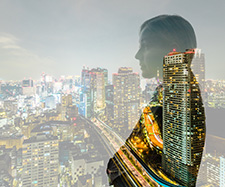Physical distancing. Self-isolation. Self-quarantine: What are they and how to protect yourself and others?

As the number of COVID-19 cases around the world grows, we are hearing more people using phrases like physical distancing, social distancing and self-isolation. What does it all mean?
What is physical distancing?
Physical distancing is a tool public health officials recommend to slow the spread of COVID-19. The WHO is advocating changing our language to “physical distancing” from “social distancing” to clarify that staying at home isn’t about breaking contact with family, friends or colleagues—it’s about keeping a physical distance to make sure the virus doesn’t spread.
- Keep a distance of two arm lengths or approximately two metres/six feet, between you and the person next to you.
- Work from home, if you are able to.
- If you cannot work from home, discuss opportunities to work staggered shifts to limit the number of people working together at one time.
- If you need to commute to work, travel during low volume times, and whenever possible maintain a distance of 2 metres/ six feet. Make sure that you wash your hands thoroughly after travelling.
- Avoid touching other people, which includes handshakes.
- Limit in-person contact, wear a mask and ensure that you keep the two metre /six feet distance away from people who are more vulnerable to COVID-19, such as older adults, since you may put them at risk.
- Limit time out of your home in communal areas like stores.
Tip: When you are not working, it is a good time to do things that you can do at home, but might not have had time to do before—learn a skill online, organize your home, connect with your family, and fill your time with something meaningful to you. Do not focus on what you cannot do, but what you can do.
What is self-isolation?
Self-isolation should happen if there is a possibility you have been exposed to COVID-19 or have been in a high-risk situation like travelling internationally. It means separating yourself from others, by staying at home and avoiding contact with other people.
- The reasons for self-isolation mean that you have a higher risk for developing the illness. Make sure you know the symptoms of COVID-19, and have a clear plan for the health care professional you will call if you develop any.
- Be more vigilant than just social or physical distancing. You must stay home—not go to work, not be out in public for a walk or not using public transportation, taxis or rideshares.
- Have groceries and other supplies delivered to your home.
- Keep contact with others limited, and keep two metres / six feet or more apart and wear a mask when you are around others in your home, if you can.
- Stay in a separate room away from other people in your home, as much as possible. Use a separate bathroom, if you have one.
- Clean/disinfect all high touch surfaces daily, including computers, phones, TV remotes, etc.
- Avoid contact with people who could be at higher risk of COVID-19, such as older adults.
- Structure your day and keep busy. Keep your windows open for period of fresh air, and keep blinds/curtains open to let in as much sunlight as possible.
What is self-quarantine?
If you have COVID-19 or are waiting to hear your diagnosis, you must self-quarantine.
- Stay home until your public health authority tells you that you are no longer a risk.
- Take all the precautions of self-isolating and ensure all surfaces that you touch are fully disinfected, before others touch them.
- When you cough or sneeze, cover your mouth and nose with a tissue, or sneeze into your upper sleeve or elbow, not your hand.
- Throw used tissues in a wastebasket that is lined with a plastic bag to make disposal easier and safer.
- The main thing is to avoid all in-person contact with others.
- If you live alone, it is also important to tell a friend or family member that you are self-quarantined and have someone check in on you, by phone or other virtual means, every day.
- Avoid contact with people who could be at higher risk of COVID-19, such as older adults.
- Structure your day and keep busy. Keep your windows open for period of fresh air, and keep blinds/curtains open to let in as much sunlight as possible.
In each of these situations:
Cleaning and hygiene are also important.
- Wash your hands with soap and water for 20 seconds or more before touching your face or eating.
- Rub your hands for 20 seconds or more when using hand sanitizer.
- Cover your nose and mouth with a tissue or your elbow when sneezing or coughing and wash your hands right after.
- Clean frequently used surfaces everyday.
Finally, staying away from others, whether by physical distancing, self-isolation or self-quarantine, does not mean have no contact. In fact, contact by telephone, video and chat is more important than ever. Make a point to reach out in a way that is safe. Exercise at home if you are not ill. Make the time to do both. It is essential for your overall health and well-being.
